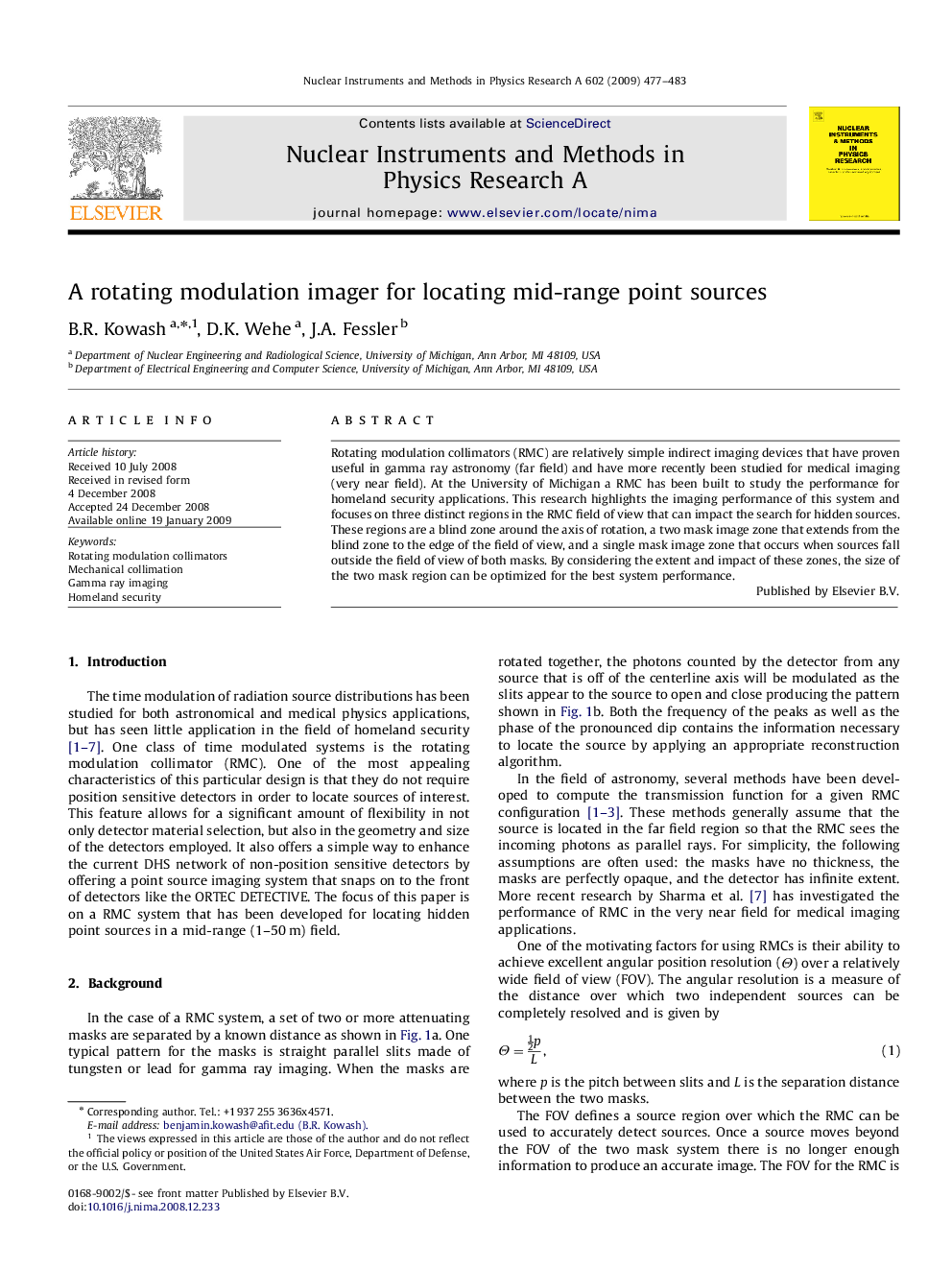| Article ID | Journal | Published Year | Pages | File Type |
|---|---|---|---|---|
| 1828392 | Nuclear Instruments and Methods in Physics Research Section A: Accelerators, Spectrometers, Detectors and Associated Equipment | 2009 | 7 Pages |
Rotating modulation collimators (RMC) are relatively simple indirect imaging devices that have proven useful in gamma ray astronomy (far field) and have more recently been studied for medical imaging (very near field). At the University of Michigan a RMC has been built to study the performance for homeland security applications. This research highlights the imaging performance of this system and focuses on three distinct regions in the RMC field of view that can impact the search for hidden sources. These regions are a blind zone around the axis of rotation, a two mask image zone that extends from the blind zone to the edge of the field of view, and a single mask image zone that occurs when sources fall outside the field of view of both masks. By considering the extent and impact of these zones, the size of the two mask region can be optimized for the best system performance.
